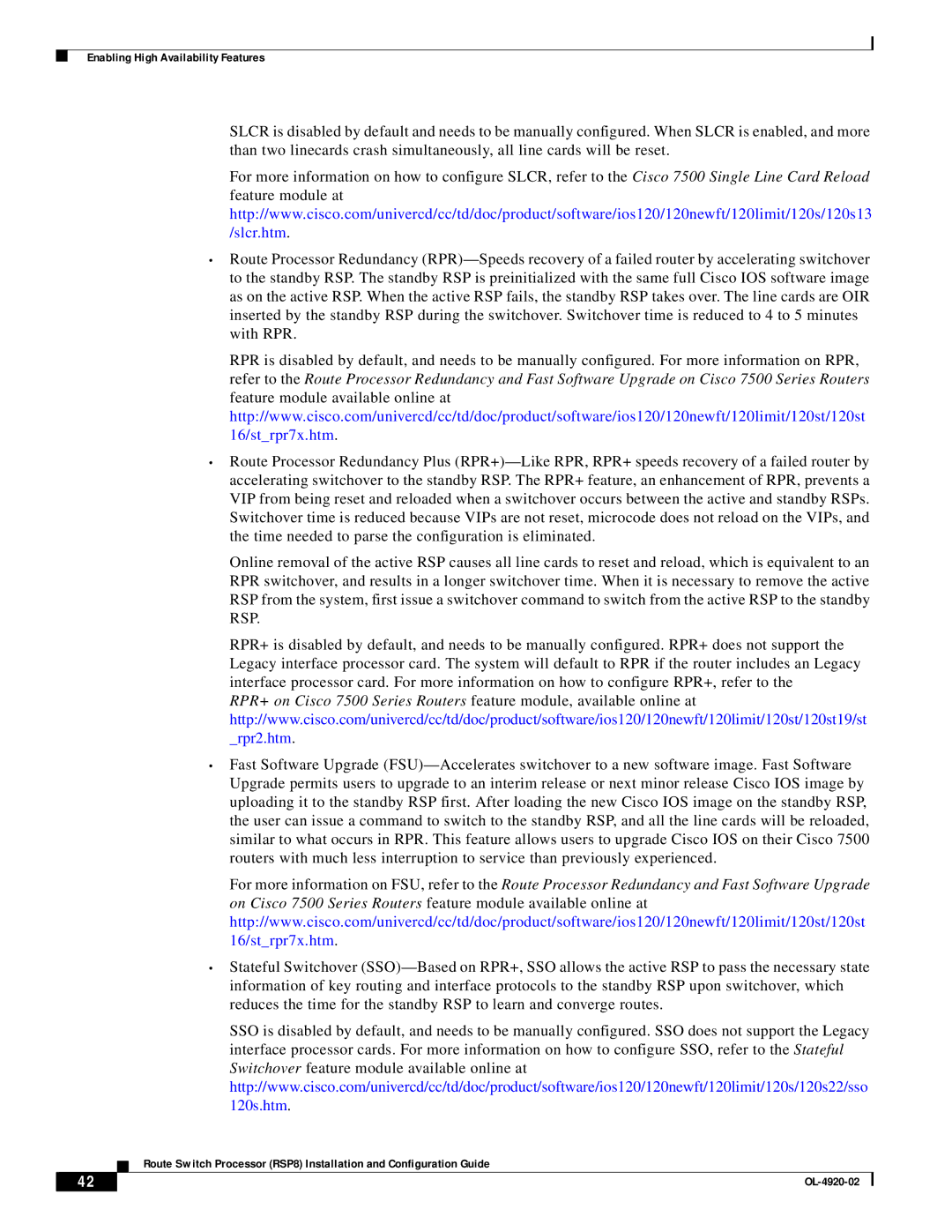
Enabling High Availability Features
SLCR is disabled by default and needs to be manually configured. When SLCR is enabled, and more than two linecards crash simultaneously, all line cards will be reset.
For more information on how to configure SLCR, refer to the Cisco 7500 Single Line Card Reload feature module at http://www.cisco.com/univercd/cc/td/doc/product/software/ios120/120newft/120limit/120s/120s13 /slcr.htm.
•Route Processor Redundancy
RPR is disabled by default, and needs to be manually configured. For more information on RPR, refer to the Route Processor Redundancy and Fast Software Upgrade on Cisco 7500 Series Routers feature module available online at http://www.cisco.com/univercd/cc/td/doc/product/software/ios120/120newft/120limit/120st/120st 16/st_rpr7x.htm.
•Route Processor Redundancy Plus
Online removal of the active RSP causes all line cards to reset and reload, which is equivalent to an RPR switchover, and results in a longer switchover time. When it is necessary to remove the active RSP from the system, first issue a switchover command to switch from the active RSP to the standby RSP.
RPR+ is disabled by default, and needs to be manually configured. RPR+ does not support the Legacy interface processor card. The system will default to RPR if the router includes an Legacy interface processor card. For more information on how to configure RPR+, refer to the
RPR+ on Cisco 7500 Series Routers feature module, available online at http://www.cisco.com/univercd/cc/td/doc/product/software/ios120/120newft/120limit/120st/120st19/st _rpr2.htm.
•Fast Software Upgrade
For more information on FSU, refer to the Route Processor Redundancy and Fast Software Upgrade on Cisco 7500 Series Routers feature module available online at http://www.cisco.com/univercd/cc/td/doc/product/software/ios120/120newft/120limit/120st/120st 16/st_rpr7x.htm.
•Stateful Switchover
SSO is disabled by default, and needs to be manually configured. SSO does not support the Legacy interface processor cards. For more information on how to configure SSO, refer to the Stateful Switchover feature module available online at http://www.cisco.com/univercd/cc/td/doc/product/software/ios120/120newft/120limit/120s/120s22/sso 120s.htm.
Route Switch Processor (RSP8) Installation and Configuration Guide
42 |
| |
|
